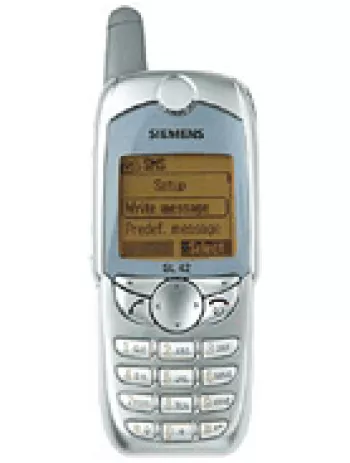
Introduction to Siemens SG75
The Siemens SG75 is a mobile device that was announced in September 2005. Although it was later cancelled, this model represented a comprehensive attempt by Siemens to capitalize on the growing demand for feature phones that combined several advanced functionalities during that era. This article delves deeply into the specifications, design, and capabilities of the Siemens SG75 to appreciate what could have been a remarkable device in its time.
Design and Build
The Siemens SG75 had dimensions of 98 x 49.5 x 23 mm and a weight of 123 grams, making it relatively compact and portable for its time. Designed with a classic candy bar form factor, the phone was ergonomically structured for comfort and ease of use. It came in an elegant Metallic White color, giving it a sleek and professional look.
Display
The phone boasted a 2.0-inch TFD screen capable of displaying 256K colors. With a resolution of 176 x 220 pixels, the screen offered a decent clarity and vibrancy given the technology of the early 2000s. The screen-to-body ratio was around 26%, typical for devices from that era, which prioritized functionality and tactile button interfaces over expansive display areas.
Camera Capabilities
The Siemens SG75 was equipped with a 1.3 MP main camera. This allowed users to capture images with reasonable detail given the standards of that time. Video recording capabilities were included, catering to the rising consumer interest in multimedia messaging and personal video recording. However, the device did not feature a front-facing selfie camera, which was not yet a standard expectation in mobile phones during its development period.
Network and Connectivity
Technologically, the SG75 supported GSM and UMTS networks, capable of operating on 2G bands (GSM 900, 1800, 1900) and 3G bands (UMTS 2100). It also allowed for speeds up to 384 kbps, which was competitive for its time, enabling relatively quick internet browsing and data transmission. Connectivity options included Bluetooth for short-range wireless data exchange, although it lacked Wi-Fi and GPS positioning systems. The device also did not have FM radio capabilities, focusing instead on cellular and Bluetooth connectivity.
Memory and Storage
Internally, the Siemens SG75 featured 70MB of storage. This was typical for feature phones, which primarily aimed at efficient power and resource management over extensive storage capacities. For those requiring additional space, the phone offered an RS-MMC slot, allowing external memory expansion. The presence of phonebook management facilitated easy contact storage and organization, supporting robust call records management for dialed, received, and missed calls.
Sound and Audio
The device supported various alert types, including vibration, downloadable polyphonic, and MP3 ringtones, enhancing customization and personalization for users. It lacked a 3.5mm audio jack, a common omission at the time, focusing instead on a proprietary connector for data and audio interfacing.
Software and Features
Powered by a traditional feature phone operating system, the Siemens SG75 offered basic communication and multimedia features. Messaging was comprehensive, supporting SMS, MMS, Email, and Instant Messaging, catering to diverse communication needs. Web browsing was facilitated through a WAP 2.0/xHTML browser, enabling access to mobile-optimized websites. Additionally, Java MIDP 2.0 capabilities allowed users to download and enjoy various games and applications, enhancing entertainment and productivity options.
Battery Life
The device housed a removable Li-Po 920 mAh battery, offering a standby time of up to 325 hours and a talk time of up to 3 hours and 20 minutes. These specifications underscored the device's capacity for prolonged usage without frequent recharges, a critical feature for users reliant on dependable mobile communication on the go.
Conclusion
Though the Siemens SG75 never reached the market due to its cancellation, its design and specifications provide insight into the expectations and technological thresholds of mid-2000s mobile telephony. Blending functionality, design, and innovation, the SG75 was set to be a considerable competitor in the feature phone market. While Siemens eventually exited the mobile phone industry, devices like the SG75 remain a testament to their commitment to quality and innovation.
Key Features of Siemens SG75
- Supports GSM and UMTS network technologies.
- 3G connectivity with UMTS 2100 band and 384 kbps speed.
- Compact dimensions of 98 x 49.5 x 23 mm and a weight of 123 g for ease of portability.
- 2.0-inch TFD display with 256K colors, providing vibrant visuals.
- 1.3 MP main camera with video recording capability.
- Bluetooth connectivity for wireless data transfer.
- Removable Li-Po 920 mAh battery, offering up to 325 hours of standby time.
- Internal memory of 70MB, expandable via RS-MMC card slot.
- Supports SMS, MMS, Email, and Instant Messaging for versatile communication options.
- Java support with MIDP 2.0 for running applications.
Disadvantages of Siemens SG75
- Status Cancelled: The phone was cancelled and never officially released.
- Low Screen-to-Body Ratio: The screen occupies only approximately 26% of the front, which can result in a smaller display area.
- No Loudspeaker: The device does not have a loudspeaker, which might affect audio quality for calls and media.
- No 3.5mm Jack: Lacks a standard headphone jack, which limits the options for audio accessories.
- No WLAN Support: The device does not support WLAN connectivity, limiting internet access options.
- No GPS: The absence of GPS restricts navigation and location-based services.
- No FM Radio: The device does not feature an FM radio, reducing entertainment options.
- Proprietary USB Connector: Utilizes a proprietary USB connector, which can limit accessory compatibility.
- Limited Internal Memory: Comes with only 70MB of internal storage, requiring reliance on external cards.
- Removable Battery: Although it allows battery replacement, the capacity is relatively small at 920 mAh.
- Lacks a Front Camera: There is no selfie camera available for video calls or selfies.

View Also
More Phones
All Rights Reserved +14266 Phones © Mobilawy 2025
























